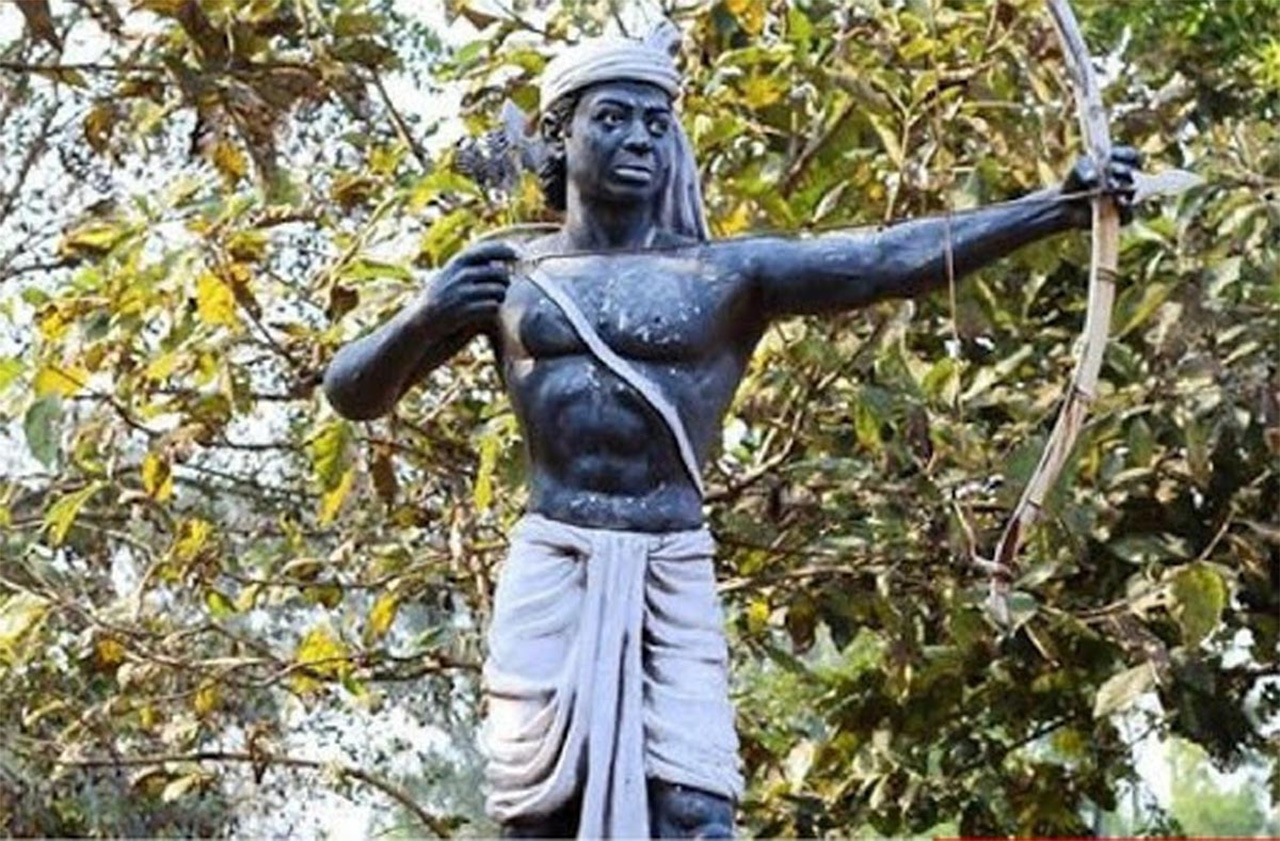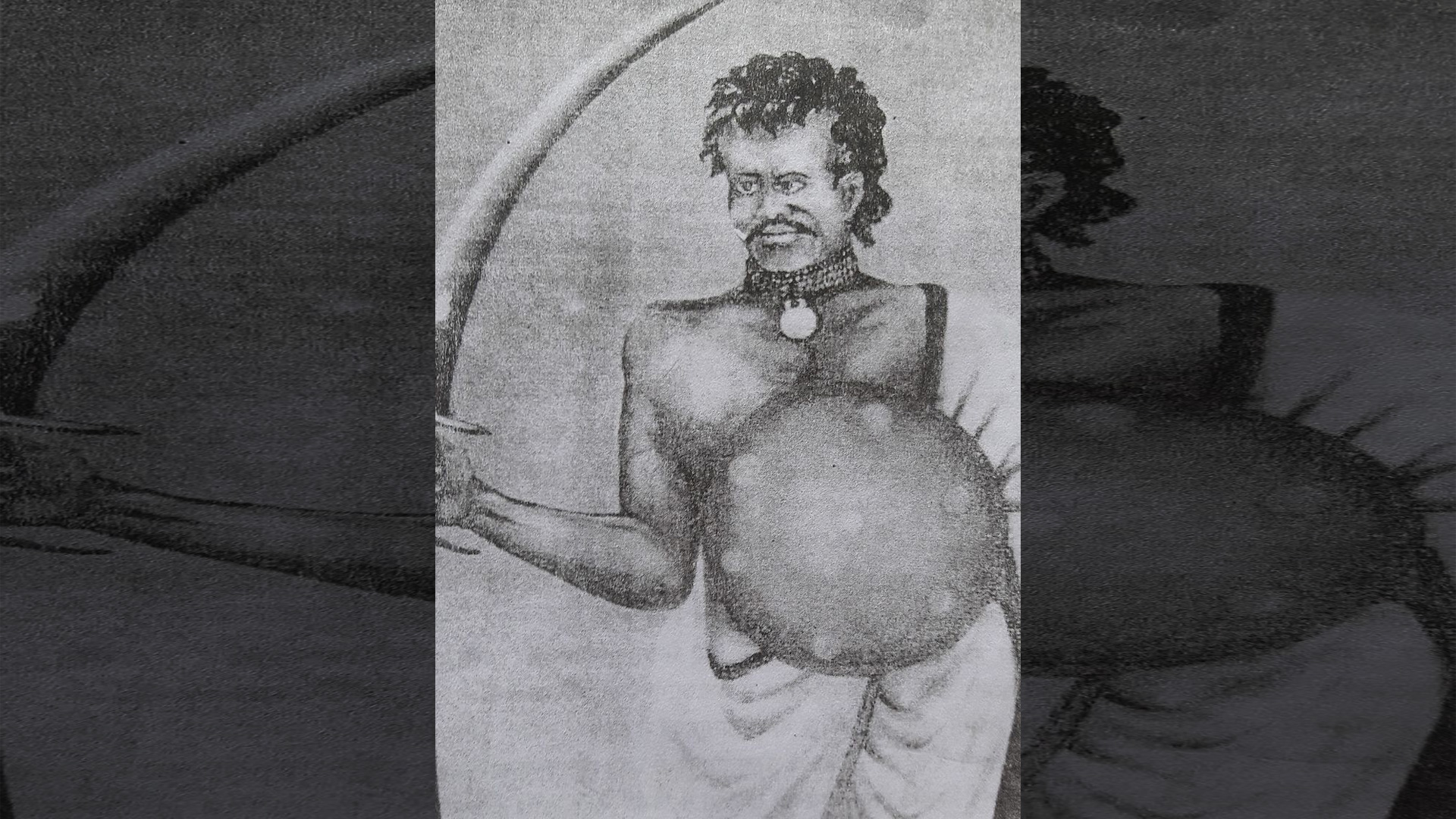Telanga Kharia

Telanga Kharia was a prominent Indian tribal freedom fighter who led a rebellion against the British Raj in Chotanagpur Region between 1850 and 1860. This uprising was primarily motivated by injustice, brutality, and the alienation of tribal lands as a result of British rule. Telanga Kharia is a prominent character in the Chotanagpur region's independence movement, with other notable freedom fighters such as Vir Budhu Bhagat, Sidhu Kanhu, Birsa Munda, and Tilka Manjhi.
Telanga Kharia was born on February 9, 1806, in Murgu village, Gumla district, modern-day Jharkhand state. He belongs to the Kharia tribe. His father's name was Thunya Kharia, and he worked as a storekeeper for Chotanagpur Nagvansi, King of Ratu. His mother's name was Peti Kharia. He married Ratni Kharia. Telanga Kharia was naturally fearless, honest, and outspoken from a young age. He was active in agriculture and animal husbandry. He gained a strong interest in social and political concerns after frequently witnessing debates on these themes in the court of the King of Ratu, where he used to accompany his father. As an adult, he was noted for his revolutionary ideas, logical abilities, and commitment to social duty.
By the end of 1850, British rule had been entrenched in Chotanagpur region. Tribes have had their own ancient independent self-governance system known as the "Parha System" for centuries, and they have been virtually completely free of outside intrusion. However, the British Raj's restrictions disrupted and shattered this rule of autonomous self-government. Tribals were now required to pay revenue on the land they had been preparing and farming for millennia. When they failed to pay the land revenue, they lost control of their land to zamindars and Britishers. They were compelled to live as field labourers. Money lenders and zamindars took advantage of any opportunity to exploit ordinary people. Aside from that, there was a significant problem of rural indebtedness. Poor individuals were forced to abandon their land because they were unable to repay loans from village moneylenders. Many of these obligations were inherited from the past and accumulated over time. The common man's situation was deplorable.
Telanga Kharia could not bear the injustices and horrors and began the fight against British rule and their middlemen. He began organising individuals and raising awareness among them. He established Jury Panchayats in numerous villages, which functioned as self-government parallel to British control. Telanga Kharia established 13 Jury Panchayats in the Sisai, Gumla, Basia, Simdega, Kumhari, Kolebira, Chainpur, Mahabuang, and Bano areas. He established "Akhara," where he taught his followers how to handle weapons. Their primary weapons were swords and bow-arrows. He assembled an army of between 900 to 1500 trained warriors. They fought guerrilla-style. Telanga Kharia and his followers assaulted the British, their intermediaries, and the entire British Raj. They also robbed the British banks and treasuries. Telanga Kharia's insurrection against the British Raj in the Chotanagpur district reached its zenith between 1850 and 1860. The British authorities were desperate to get rid of Telanga Kharia and sought to quell the insurrection at any cost. Telanga Kharia grew extremely concerned once she learned of the British government's intentions. He began to run his operations mostly from hideouts in the bush and unknown areas. When Telanga Kharia was addressing a meeting at a local Jury Panchayat, an agent of Zamindar informed the Britishers of his presence. Soon, the British forces encircled the meeting spot and detained Telanga Kharia. He was first transported to Lohardaga Jail, followed by Calcutta Jail, where he was imprisoned for 18 years.
When Telanga Kharia was released from Calcutta jail, he returned to Sisai Akhara to meet with his supporters. He began to revitalise the movement and devised strategies to improve the group. The British quickly learned of his resistance activities and began plotting to murder him. On April 23, 1880, while Telanga Kharia was offering daily prayer at Sisai Akhara before beginning the training session, one of the British spies, Bodhan Singh, ambushed the neighbouring Akhara and opened fire on him. After being hit by a gunshot, he fell. Then, his supporters carried his body and fled to the forest, making it impossible for British authorities to locate him. After crossing the Koel River, they buried Telanga Kharia's body in Soso Neem Toli village in Gumla district. This burial site is currently known as 'Telanga Topa Tand,' which translates to 'Telanga's Burial Ground'. This location is revered by the residents of Chotanagpur, particularly the Kharia group. Every year on this day, people commemorate his martyrdom. In addition, a one-week-long 'Sahid Telanga Mela' is being held in Dhedhouli village, Gumla district. Telanga Kharia continues to inspire millions in the Chotanagpur district with his bravery, sacrifice, and martyrdom.


